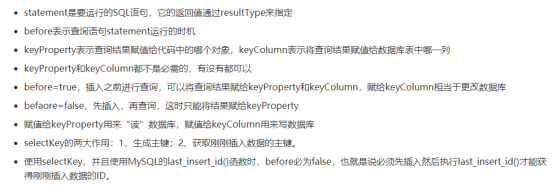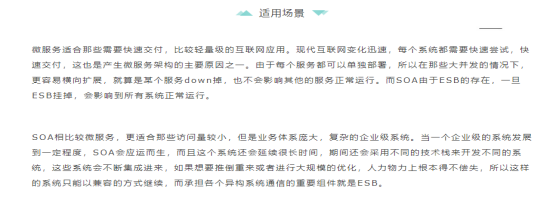
会持续更新中!
一、注解或参数使用
1、@RestController :
组合注解,Controller纳入spring容器,完成异步响应
2、@PathVaribale和@RequestParam区别:
| @PathVaribale 获取url中的数据 |
|---|
例子:
localhost:8080/hello/id
@RequestMapping(value="/hello/{id}/{name}",method= RequestMethod.GET)
public String sayHello(@PathVariable(“id”) Integer id,@PathVariable(“name”) String name) | |
| @RequestParam 获取请求参数的值 |
|---|
例子:localhost:8080/hello?id=98&&name=wo
@RequestMapping(value="/hello",method= RequestMethod.GET)
public String sayHello(@RequestParam(“id”) Integer id,@RequestParam(“name”) String name
| @Param |
|---|
是MyBatis所提供的(org.apache.ibatis.annotations.Param),作为Dao层的注解,作用是用于传递参数,从而可以与SQL中的的字段名相对应,一般在2=<参数数<=5时使用最佳。
帖子详情:https://blog.csdn.net/u010412719/article/details/69788227
3、@EqualsAndHashCode(callSuper = false)
这个注解的作用就是自动的给model bean实现equals方法和hashcode方法,且不调用父类的属性
4、DTO和VO区别:
代表服务层需要接收的数据和返回的数据,而VO代表展示层需要显示的数据。
5、@RequestParam :
用于将请求参数区数据映射到功能处理方法的参数上
6、@RequestBody :
主要用来接收前端传递给后端的json字符串中的数据的(请求体中的数据的);GET方式无请求体,所以使用@RequestBody接收数据时,前端不能使用GET方式提交数据,而是用POST方式进行提交。
@RequestBody(required=false) 表示xxx对象可以不传入
7、@InsertProvider :
@Insert和@InsertProvider都是用来在实体类的Mapper类里注解保存方法的SQL语句。不同的是,@Insert是直接配置SQL语句,而@InsertProvider则是通过SQL工厂类及对应的方法生产SQL语句,这种方法的好处在于,我们可以根据不同的需求生产出不同的SQL,适用性更好。
8、@SelectKey :
何获在插入后,获取自增主键id的值,自动放到pojo的id属性
@InsertProvider(type = BusinessRulesItemSqlProvider.class, method = “addBusinessRulesItem”)
@SelectKey(statement = “SELECT LAST_INSERT_ID()”, keyProperty = “id”, before = false, resultType = Long.class)

9、@SelectProvider(type=xxxx.class,method=”xxxx”)
用自定义的provider类构造SQL语句,type 属性用于指定获取sql语句的指定类,method 属性用于指定类中要执行获取sql语句的方法
@Results注解来映射查询结果集到实体类属性。
10、@ServletComponentScan :
在SpringBootApplication上使用@ServletComponentScan注解后,Servlet、Filter、Listener可以直接通过@WebServlet、@WebFilter、@WebListener注解自动注册,无需其他代码。
11、@SpringBootApplication :
springboot启动类中@SpringBootApplication = @Configuration + @EnableAutoConfiguration + @ComponentScan
@Configuration的注解类标识这个类可以使用SpringIoC容器作为bean定义的来源。@Bean注解告诉Spring,一个带有@Bean的注解方法将返回一个对象,该对象应该被注册为在Spring应用程序上下文中的bean。
@EnableAutoConfiguration:能够自动配置spring的上下文,试图猜测和配置你想要的bean类,通常会自动根据你的类路径和你的bean定义自动配置。
@ComponentScan:会自动扫描指定包下的全部标有@Component的类,并注册成bean,当然包括@Component下的子注解@Service,@Repository,@Controller。
12、@ImportResource :
springboot启动类中@ImportResource用于加载其他的配置文件。Eg:yml或xml文件,不然只默认加载application的配置文件。
13、@ConfigurationProperties :
spring boot 使用 -》@ConfigurationProperties : 把配置文件的信息,读取并自动封装成实体类
@EnableConfigurationProperties注解的作用是:使得使用 @ConfigurationProperties 注解的类生效。
14、JSTL:
(Java server pages standarded tag library,即JSP标准标签库)
15、spring.main.allow-bean-definition-overriding=true
表示后发现的bean会覆盖之前相同名称的bean。
16、@Import
有时没有把某个类注入到IOC容器中,但在运用的时候需要获取该类对应的bean
17、@interface :元注解以及自定义注解


18、nacos配置参数
spring.cloud.nacos.config.shared-dataids=
geespace-eureka-${spring.profiles.active}.properties,geespace-zipkin-{spring.profiles.active}.properties
spring.cloud.nacos.config.refreshable-dataids={spring.cloud.nacos.config.shared-dataids}

19、eureka配置参数

20、mvn命令package和install的区别?
package是把jar打到本项目的target下,而install时把target下的jar安装到本地仓库,供其他项目使用。 当其他项目需要依靠该项目编译是,使用install。
21、lombok几个基本注解的使用

22、@Results:

二、知识点整理
1、微服务SpringCloud
1.1断路由原理?

1.2 微服务与SOA区别?





微服务与SOA的区别 https://blog.csdn.net/qq_35119422/article/details/81560833
2、中间件
中间件是什么?
https://baike.baidu.com/item/%E4%B8%AD%E9%97%B4%E4%BB%B6/452240?fr=aladdin
2、1 Zookeeper 和 Eureka 之间的区别
Zookeeper是CP的,Eureka是AP的 ↓
https://blog.csdn.net/snoweaglelord/article/details/88529462
2、2 Apache Pulsar -系统软件服务程序介绍
https://www.cnblogs.com/airnew/p/9727188.html
3、k8s和Docker关系简单说明
https://blog.csdn.net/yanghaolong/article/details/86680282
说白了,我们用kubernetes去管理Docker集群,即可以将Docker看成Kubernetes内部使用的低级别组件。另外,kubernetes不仅仅支持Docker,还支持Rocket,这是另一种容器技术。

